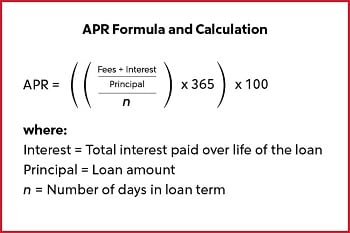For better or worse, acronyms and initialisms have become commonplace in normal conversation.
When was the last time someone said they watched the game on the Entertainment and Sports Programming Network (ESPN)? Or was asked for their Personal Identification Number (PIN) or Zone Improvement Plan (ZIP) code?
In financial circles, you’ve likely heard these two—APR and APY. But what do they stand for? How do they work? What’s the difference between the two?

The ins and outs of APR and APY can get rather complex. But a little context can set us on the right path.
Compound interest
Before we decipher APR and APY, let’s look at a sneaky little item called compound interest (AKA compounding interest). Far different than simple interest, which calculates interest based solely on the original loan or investment amount, compound interest is calculated on the initial principal as well as accumulated interest from previous periods. In other words, compound interest generates simple interest as well as “interest on the interest.”
Compound interest operates on different frequency schedules, which moves the needle up or down on your return on investment and your monthly loan payments. For investments, the more frequent the compounding interest, the more bang for your buck. On loans, financial institutions like SELCO generally compound interest daily over the life of the loan and roll that into monthly payments. (Here’s an easy way to calculate compound interest.)
Now that we’ve gotten that out of the way, let’s move on to APR and APY.
APR
The basics first: APR stands for annual percentage rate, reflecting the simple interest rate charged for loans over the course of a year. The term “simple” may be somewhat misleading when it comes to describing the APR; it’s a little more complicated than that. In layman’s terms, APR is a breakdown of the total cost annually for a loan. Because of this, the APR is almost always higher than the interest rate on its own.
Lenders typically offer loans with fixed or variable APRs—both of which are also determined by a customer’s credit. The better the credit, the lower the APR. Because of this, as well as other guidelines set by each lender, APRs can vary widely depending on the circumstance. For instance, credit card APRs can be all over the map:
- 0% introductory rates to entice people to join.
- Higher rates for customers with bad credit and/or limited credit history.
- Separate rates for purchases, cash advances, and balance transfers.
For fans of algebra, here’s the formula for determining the real APR of loans:

Thankfully for the rest of us, there are online calculators that can help.
APY
APY stands for annual percentage yield, and it gives you the most accurate reading of what you could earn on your investment in a year. The reason: Compound interest is factored into the rate. The more frequently the interest compounds, the greater the difference between APR and APY (a big reason why financial institutions tout APY instead of APR on their investment products).
To understand how compound interest works in tandem with APY, let’s compare interest compounded annually vs. daily and see what offers the best value.
You have $10,000 invested with a 6% interest rate. After four years, the value of your investment with interest compounded annually would be $12,624.77 (because it’s annual, the APY remains 6%). Compounded daily, however, the value jumps to $12,712.34 (APY is 6.18%).
Check out this handy APY calculator to crunch your own numbers.
Whew, that’s a lot to absorb. But the bottom line is, a higher APR means you’ll pay more on a loan, while a higher APY means you’ll earn more on your investment. Knowledge is power. And now that you have a better understanding of these confusing and oft-confused terms, you’ll be better equipped to get the best rates possible.


